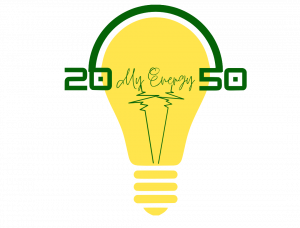What is a good ‘energy citizen’? The European Commission is now using this term, and the definition gives understanding for how people participate in shaping their energy systems. Breffni Lennon, a researcher at University College Cork, is a co-author of an article with a partial answer to this question. In this episode of MyEnergy2050 podcast, we delve into what it means to be an energy citizen and why citizen participation is essential for a successful energy transition.
People, he states, are much more aware and understanding of the energy system than policymakers often give them credit. He proposes policy and infrastructure debates are set up as black and white issues, when really, people do understand the grey zones. A good citizen can oppose government-backed projects to build safe and livable communities. An energy citizen does not accept the status quo.
Infrastructure projects show the current built environment and prompt discussions over what new infrastructure and technologies society wants. Often the infrastructure shapes how people act and live their everyday lives. In the interview, Breffni brings in bicycle culture as a representative of how road design can make biking a favoured or a neglected mode of transport.
“If you go back to the 1950s in Ireland, bicycles were a big mode of transport for people.” But then planners made a “conscious effort to accommodate cars rather than bicycles…. The bicycle became a symbol of poverty.” During this era, “Having a bicycle is a sign of poverty. If you have a system or an infrastructure designed for bicycles, then that badge or that symbol of poverty is no longer there.” Now, planners and parts of society are shifting back “towards cycling as a healthier mode of transport. As a way of revitalizing our cities,” explained Breffni.
The bicycle provides a point to demonstrate how people can express their agency. The undercurrent to the podcast interview with Breffni is how people can choose their technology or means of transport; they do so even though they are constrained by both the built infrastructure, societal norms and government policies. Choosing what we consume is as important as how we consume. For example, do we consumer coal or wind.
Do we consume ‘junk’ energy or ‘healthy’ energy?
How we consume is influenced by the insulation on homes or by electrical appliances. We may be able to choose our bicycles, but often it is hard to choose a safe route to ride it.
The social and physical structures around us shape our ‘agency.’ That is the ability to express and do certain practices, like riding a bike or keeping warm in the winter. The infrastructure, such as bike lanes or insulated homes influence how we all live our lives. Participation of society in infrastructure development can enable a greater sense of agency for citizens.
Breffni provides two good examples of agency in the energy system. One is a disputed gas project in Ireland and the other a solar power scheme in Austria. In the first example, the citizens resisted the gas project.
“The people that we were speaking to say, for example, they weren’t against gas, per se. They were saying, look at me, we’re modern people, we use gas, and we want the benefits of modern existence. But we don’t want to endanger our community by having a pipeline that could potentially explode amongst the houses and dwellings.”
Resistance to the pipeline was not a rejection of gas for some protestors, but rather an opposition to the location of the gas pipeline. Nonetheless, it is essential to consider their role as ‘energy citizens’ out there opposing energy infrastructure and helping to shape both the infrastructure and practices for generations to come. The agency of these community activists reflects not just participation into the debate on the energy transition, but also the choice around power resources (coal or wind) along with choosing the type of heat in homes.
Energy citizens require the ability to be agents of change. The Austrian example Breffni provides is about community buy-in, regardless of income levels or money put into the solar project. Members could add €100 or €1000 depending on income. The underlying point is the joint participation in the future of the community’s energy infrastructure and how homes are powered and heated. The agency of the community is directly reflected in the infrastructure they helped to finance and build.
Bicycle and energy infrastructure are good examples of perceiving agency in society. The built infrastructure from past eras – when the car or fossil fuels were favoured, now need to be redesigned to allow citizens to consume less energy. Rather than forcing citizens to be safe and drive their car to the store, bicycle infrastructure can make sure they also arrive safely. If people choose to relocate a gas pipeline, it is to ensure their safety in their communities. These cases show there is not a total rejection of the old infrastructure but an acknowledgement of a transition towards a new way of living.
People understand nuances in the energy system. It is here that Breffni provides a nutshell to explain agency of energy citizens. Completely wiping out the old order may not serve the interests of people or companies. Still, allowing for other modes of transport or ways of producing energy, then these practices foster a transition away from the old order – the fossil fuel order. And it is here where energy citizens push for a chance to practice their agency for choice. Citizens want clean and safe communities; they have the right to implement a clean transition. What is a good energy citizen? One that does not accept the status quo.
Dr. Michael LaBelle is an associate professor at Central European University in the Department of Environmental Sciences. He produces the My Energy 2050 podcast to change how we communicate and improve the energy transition.
